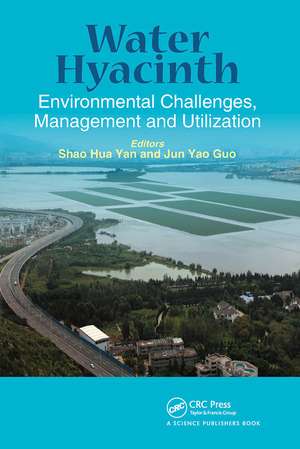Water Hyacinth: Environmental Challenges, Management and Utilization
Editat de Shaohua Yan, Jun Yao Guoen Limba Engleză Paperback – 31 mar 2021
Preț: 318.68 lei
Preț vechi: 359.79 lei
-11% Nou
Puncte Express: 478
Preț estimativ în valută:
60.99€ • 62.46$ • 50.73£
60.99€ • 62.46$ • 50.73£
Carte tipărită la comandă
Livrare economică 18 martie-01 aprilie
Preluare comenzi: 021 569.72.76
Specificații
ISBN-13: 9780367782320
ISBN-10: 0367782324
Pagini: 345
Dimensiuni: 156 x 234 mm
Greutate: 0.75 kg
Ediția:1
Editura: CRC Press
Colecția CRC Press
Locul publicării:Boca Raton, United States
ISBN-10: 0367782324
Pagini: 345
Dimensiuni: 156 x 234 mm
Greutate: 0.75 kg
Ediția:1
Editura: CRC Press
Colecția CRC Press
Locul publicării:Boca Raton, United States
Cuprins
Introduction. Biology of water hyacinth. Direct and strong influence of water hyacinth on aquatic communities in natural waters. Impacts of water hyacinth on ecosystem services. Mechanisms and implications of nitrogen removal. Mechanism and implications of phosphorus removal. Impact of water hyacinth on removal of heavy metals and organic pollutants. Ecological engineering using water hyacinth in phytoremediation. Impact of water hyacinth on aquatic environment in phytoremediation of eutrophic lakes. Utilization of biomass for energy and fertilizer. Utilization of water hyacinth biomass for animal feed. Economic assessment and further research.
Descriere
The water hyacinth is a disruptive factor in aquatic ecosystem management and ecosystem services, and causes problems in fisheries, transportation waterways, irrigation, hydropower generation, and water resources. To address these concerns, it is necessary to integrate past studies with current research and innovations to identify where the know
